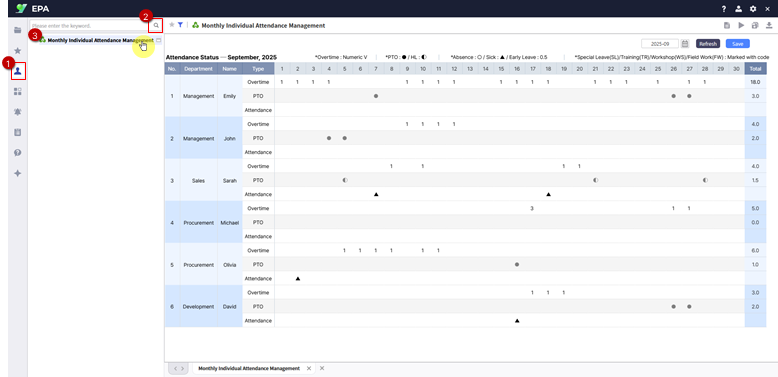This report provides real-time consolidation and management of employee monthly attendance records by department.
Move away from Excel-based tracking and manage all attendance data directly on the web.
Quickly review attendance details for each employee on selected dates, allowing central administrators to monitor overall status instantly and accurately.
Use the provided sample Excel file to experience a more efficient way to manage attendance records.
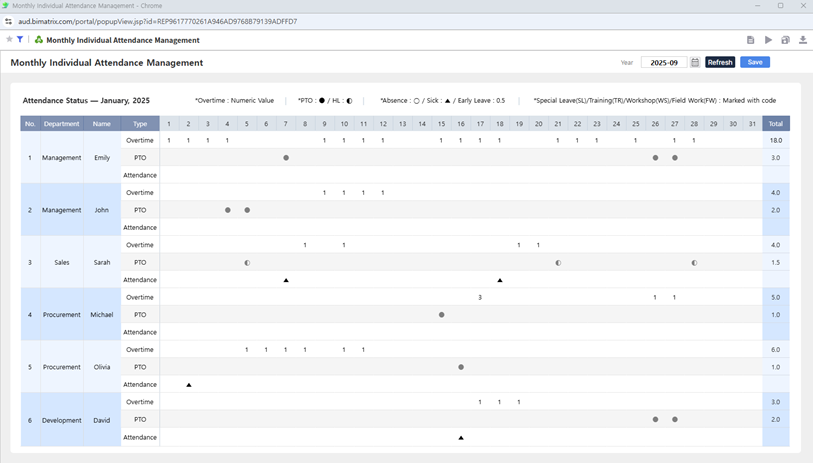
Download the sample Excel file from the Learning Experience Samples.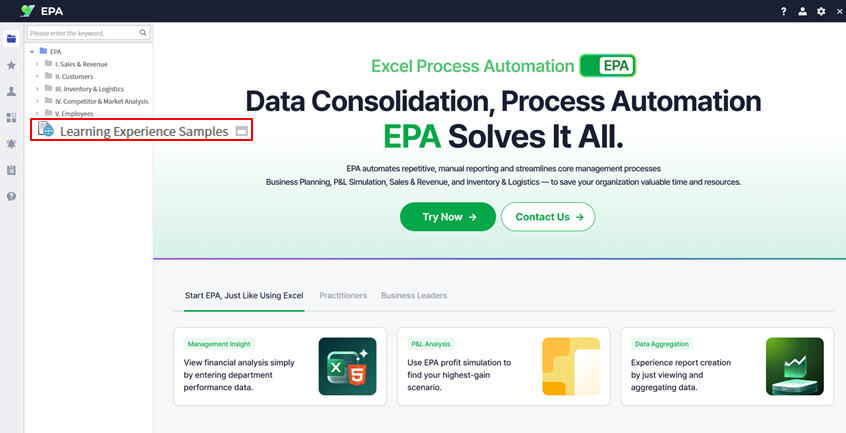
From the EPA main screen, go to [Menu] > [Tool] and launch i-AUD Designer.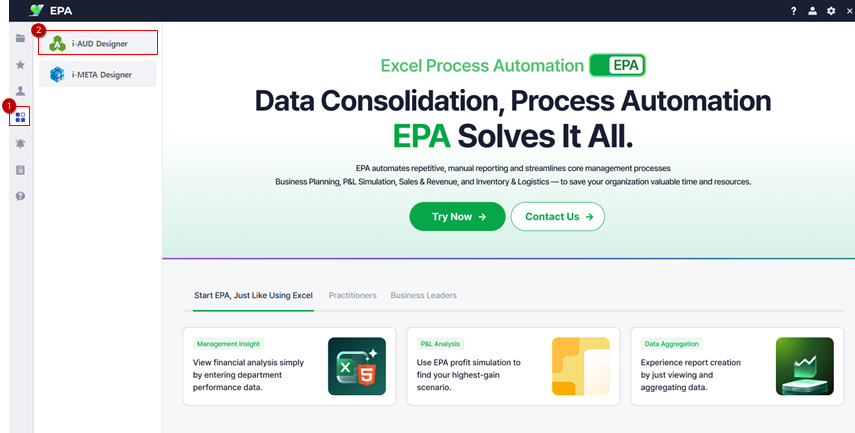
Drag and drop the saved Excel file into the i-AUD Designer window.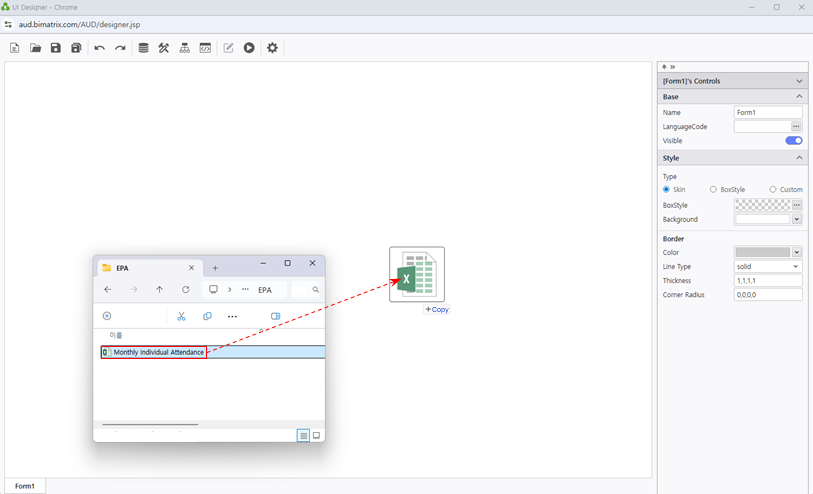
Ensure the report automatically resizes to fit the web browser window.
In the Properties pane on the right, check Docking: Left, Top, Right, Bottom.
To remove the border from the report on the designer screen, set the Line Type property under Border to ‘None’.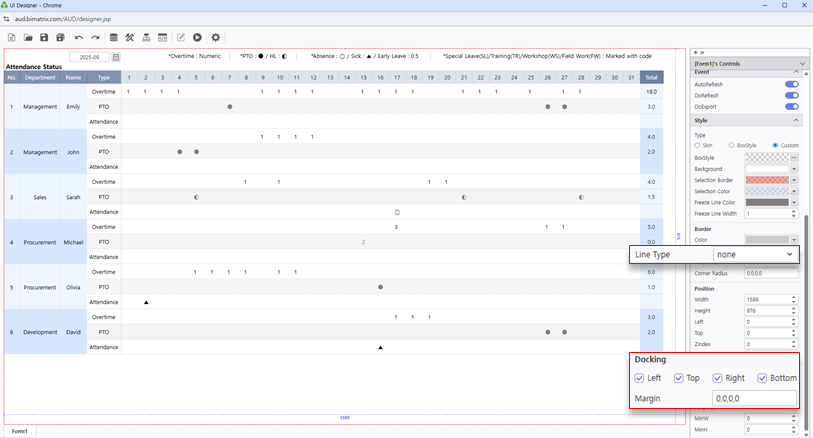
When database data is connected, the number of records displayed on the web screen is limited to 1,000 by default. You can adjust the limit to display as many records as you need.
Data > LimitofBinding : 5000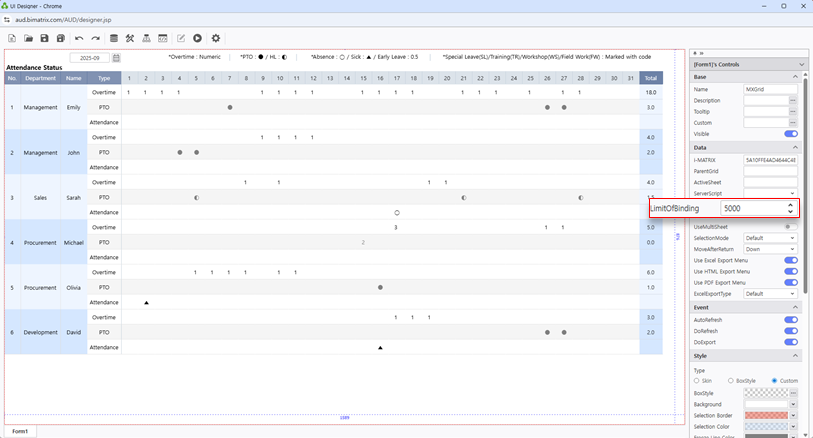
Using Excel’s ‘Name Manager’ and the UI Bot, set up the report so that data can be entered directly on the web.
Right-click on the report area, then select Design.
To configure the data input screen, you must follow these three rules:
|
According to the rules, select the area on the sheet where data will be entered and name it “data1”.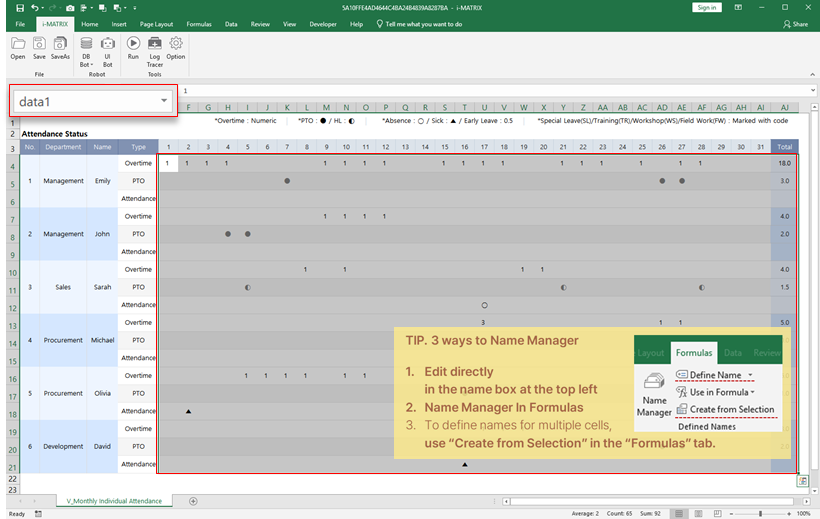
Select the entire table form to be aggregated and name it “table1”.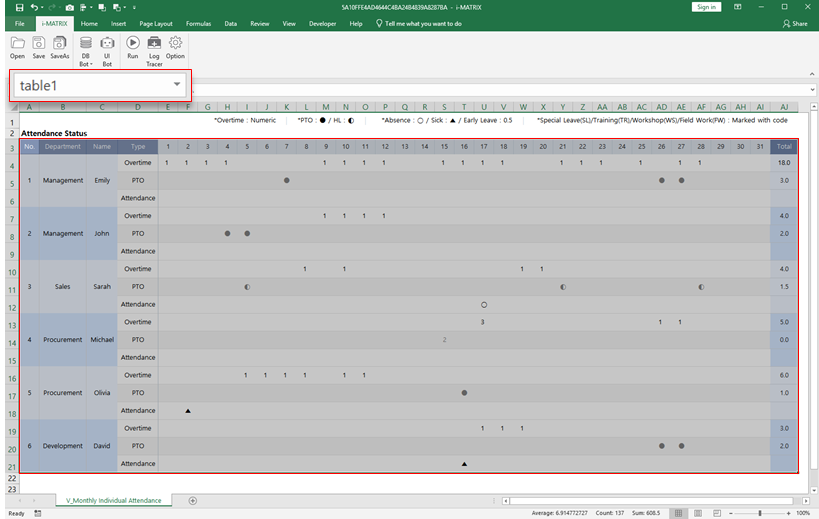
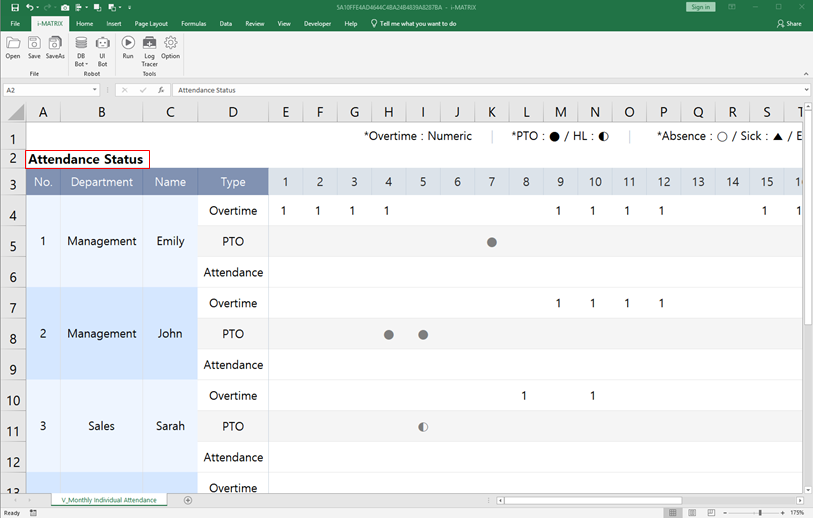
Go to the ‘i-MATRIX’ tab in the ribbon and click 'UI Bot’.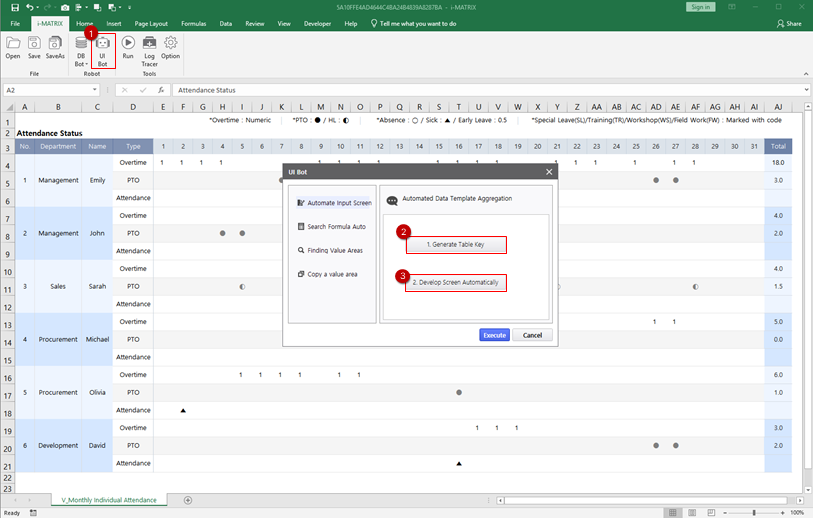
Set up a date variable to input and save data by month, and configure the table name to update automatically each month.
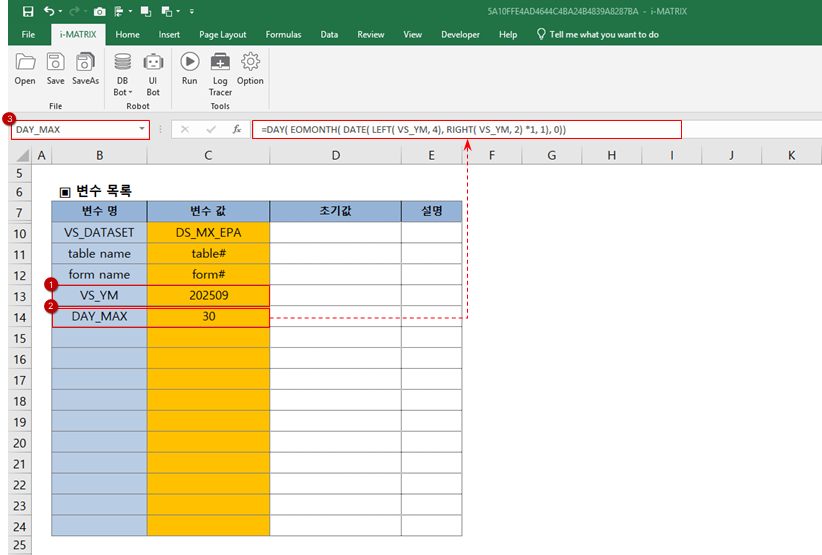
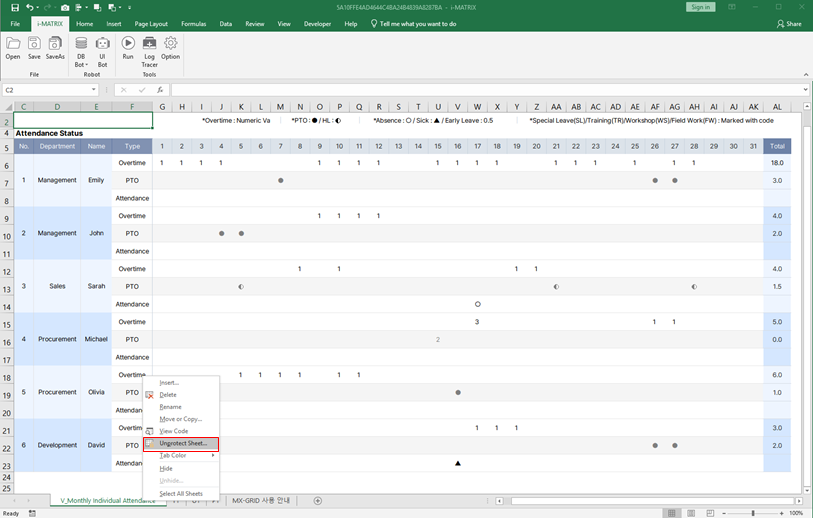
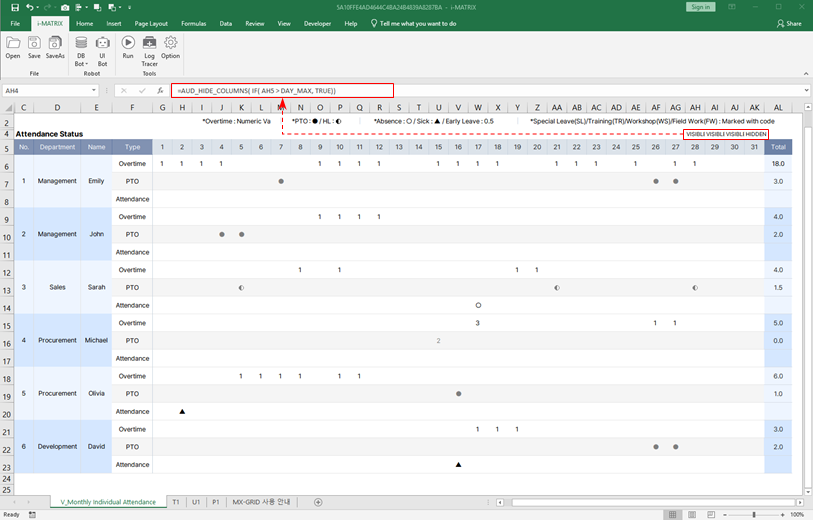
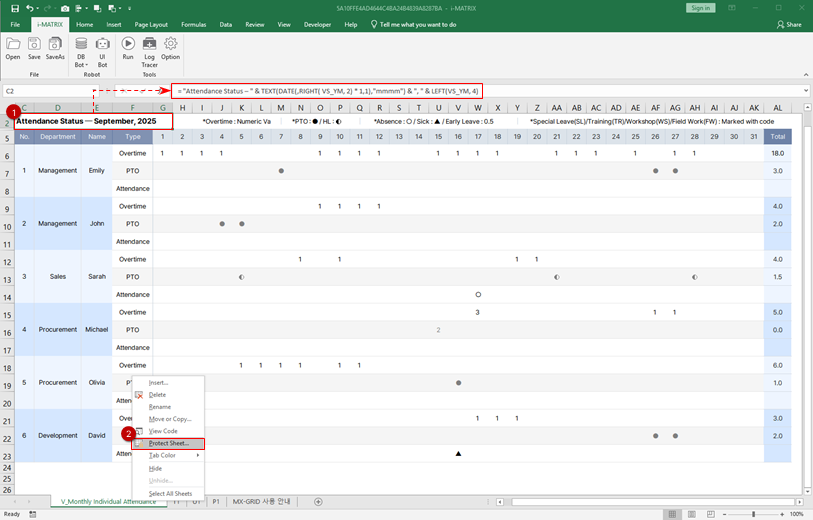
In AUD Designer, double-click an empty cell in the data area and enter a number. Verify that the value is entered and totals are calculated automatically.
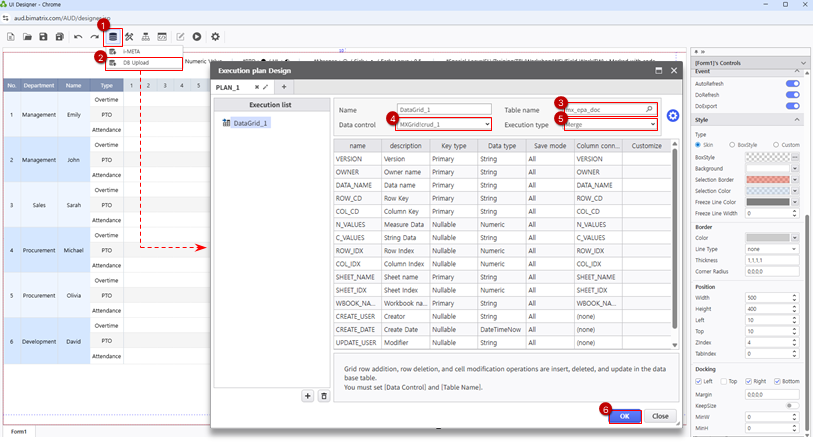
To ensure that data is saved using the selected date from the calendar in AUD Designer, set the component’s name and initial date as follows:
Name : VS_YM
InitDate : 202509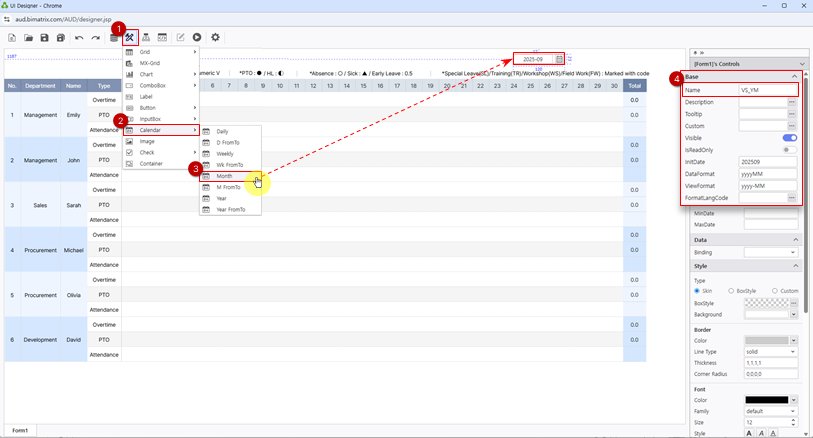
Number Specify a date in numeric format such as: NOW Function Use NOW() to set the current date as the default. DATE Function DATE(0,0,0) = NOW() The arguments represent DATE(year, month, day), and you can adjust them relative to the current date. Example) To set the date to one year before the current date : DATE(-1,0,0) DATE Function Reserved Words : F and L F(FIRST) : 1900(year), 1(month), 1(day) L(Last) : 2999(year), 12(month), the last day of the selected month(28th~31st) Examples) To set the first day of the current year : DATE(0,F,F) To set the last day of the current year : DATE(0,0,L) FromTo Calendar InitDate When using a From-To calendar, separate the start and end dates with a semicolon(;). Example) DATE(-1,0,0);NOW() |
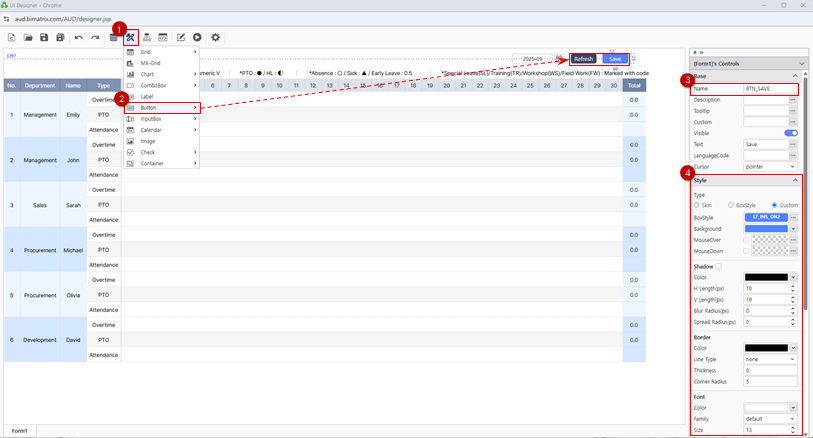
Use Process Bot to assign actions to the buttons.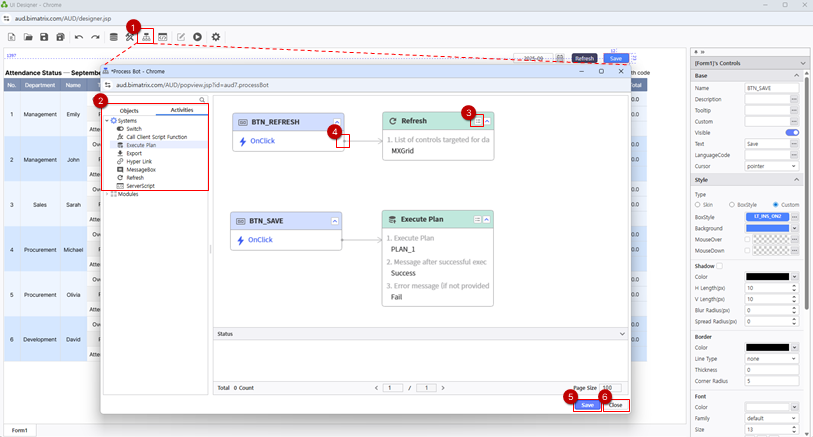
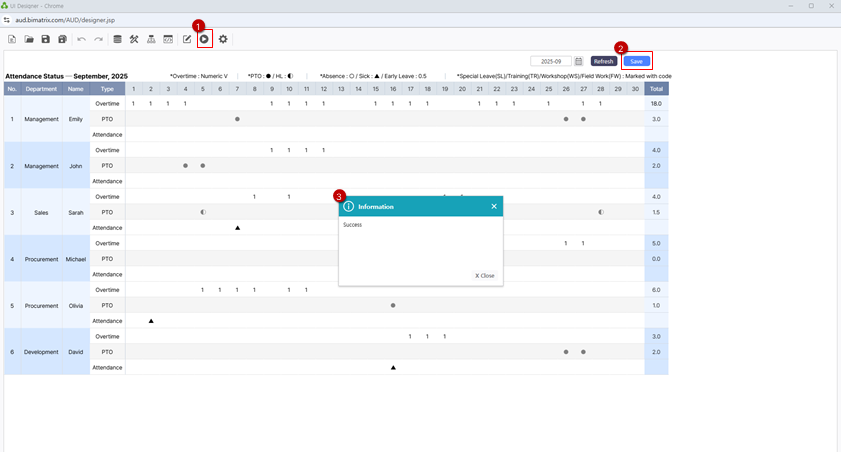
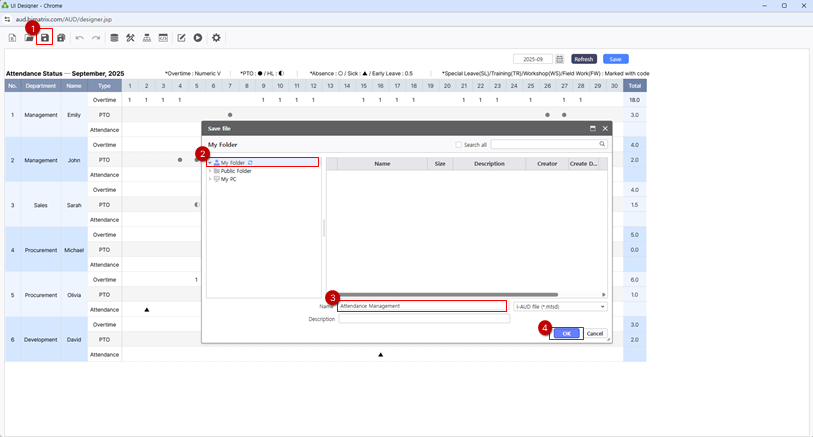
From the EPA main screen, go to [Menu] > [Individual] in the left-hand sidebar.
Click the Search(Magnifying glass icon) button to refresh the report list and confirm your saved report.
Enter data on the web and save it to share with your team.